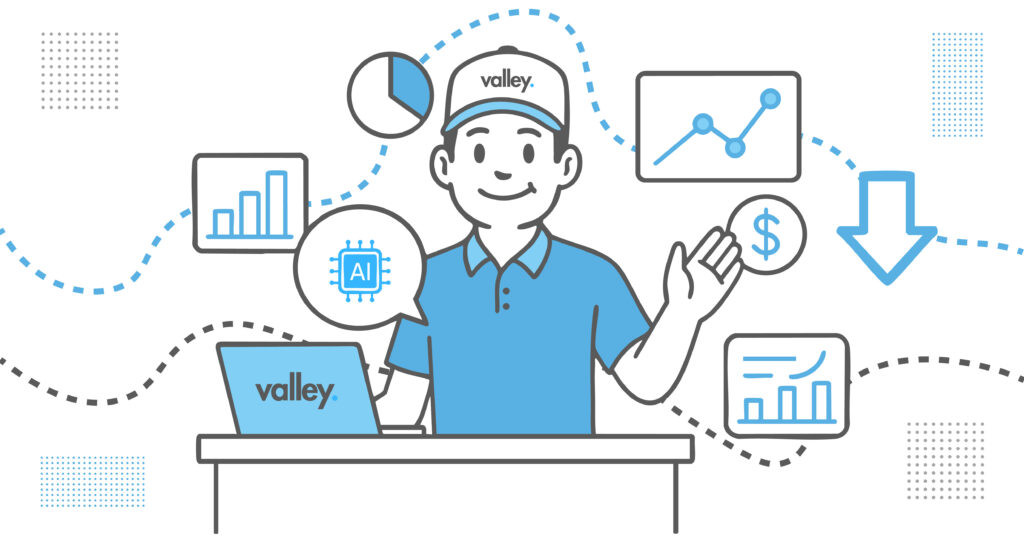AI in Trucking: Turning Data into Decisions That Cut Costs

AI in trucking is no longer just a buzzword. It has become a real tool that CEOs and fleet leaders use to cut costs, improve safety, and stay competitive. Trucks already generate massive amounts of data through sensors, logs, cameras, warehouse scanners, and customer systems. Artificial intelligence takes that raw data, finds the patterns, and turns it into useful next steps. Used well, AI helps leaders predict problems, guide teams, and protect margins during market shifts.
Quick Answer
AI in trucking works by analyzing fleet data to forecast demand, optimize routes, prevent breakdowns, and detect fraud. It reduces costs, strengthens safety, and improves decision-making. Start small, test results, and expand as value becomes clear.
From Concept to Real Results
AI is not just hype. Fleets are already proving its value. For example, a European freight operator tested AI to forecast staffing needs based on demand trends and weather. The result: smoother schedules, fewer overtime costs, and better service reliability. While results differ by operation, the overall trend is clear. When predictions align more closely with reality, companies save both time and money.
Industry news highlights how companies like C.H. Robinson and Ryder are already using AI to improve freight matching and reduce idle capacity (https://www.truckingdive.com/news/truck-broker-ai-use-ch-robinson-its-logistics-ryder/741293)
Why AI Fits Trucking
Trucking generates more data than most industries. AI turns that into decisions:
- Staffing forecasts: Predict demand spikes to schedule drivers and warehouse staff.
- Route optimization: Cut delays, save fuel, and lower accident risk by analyzing real-time traffic.
- Predictive maintenance: Spot wear and plan repairs before breakdowns occur.
- Freight and inventory management: Forecast order patterns to prevent shortages or waste.
- Fraud detection: Flag unusual claims or billing to protect margins.
What Data You Already Have
Most fleets already collect the data AI needs. The challenge is connecting and asking the right questions.
Common sources include:
- Telematics and ELDs: Hours, braking, speed, and idle time predict fuel use and safety.
- Dispatch data: Orders, routes, and dwell times show bottlenecks.
- Fuel cards and sensors: MPG, price variance, and fill patterns highlight savings and fraud.
- Maintenance logs: Repair times and fault codes support predictive maintenance models.
- Warehouse scans: Labor hours and inventory flow guide staffing and layout choices.
- Customer invoices: Order trends and claims support demand forecasting.
Starting Small, Gaining Fast
Many believe AI requires new systems or big investments. In reality, many platforms already have AI features built in. The best approach is to start small and scale:
- Turn on predictive maintenance alerts at one site.
- Pilot AI forecasting for one warehouse shift.
- Use AI-supported routing for a few lanes and compare on-time results.
- Hold weekly reviews to track progress and adjust.
AI as Risk Management
AI helps reduce risks across operations:
- Smarter staffing lowers fatigue-related accidents.
- Optimized routing reduces time in dangerous traffic or weather.
- Predictive maintenance lowers chances of breakdowns and delays.
- Fraud detection finds issues early before they grow.
Common Pitfalls and How to Avoid Them
AI projects often fail for predictable reasons. Avoid them by following these rules:
- Ambiguous goals: Define one clear question for AI to answer.
- Messy data: Standardize units, timestamps, and records.
- No ownership: Assign a leader to track progress and remove roadblocks.
- Scaling too fast: Prove results on a small scale before expanding.
- Change fatigue: Show drivers how AI helps them directly.
- Privacy and bias: Test fairness across drivers and protect sensitive data.
The U.S. Department of Transportation explains how AI is being applied in transportation and why fairness and safety oversight are key (https://www.transportation.gov/AI).
Measuring ROI the Simple Way
AI’s value should be measurable. A simple formula keeps focus:
ROI = (Savings + Added Revenue − Project Cost) ÷ Project Cost
- Fuel: Fewer out-of-route miles, less idle time, better MPG.
- Labor: Better coverage, fewer call-ins, less overtime.
- Maintenance: Fewer breakdowns, faster shop times.
- Safety: Fewer incidents and lower claim costs.
- Service: Higher on-time rates and better customer retention.
A 30–60–90 Day Roadmap for CEOs
AI can be rolled out step by step:
- Days 1–30: Pick a use case, assign an owner, connect data, set a success metric.
- Days 31–60: Run a pilot in one site, hold weekly check-ins, and track wins.
- Days 61–90: Write a playbook, expand to another site, and budget for scaling.
Choosing the Right Partner
The right partner should:
- Integrate with your current systems.
- Provide clear dashboards for non-technical staff.
- Offer training for dispatch, shop, and warehouse teams.
- Agree on success metrics and show relevant case studies.
- Allow data exporting to avoid lock-in.
Change Management that Sticks
AI tools only create value when people use them. Keep adoption simple: explain the benefits, use short training, and recognize wins. Celebrate teams who act on AI insights that save time or money.
FAQs on AI in Trucking
Does AI require rebuilding systems?
- No. Many fleets can use existing platforms with AI features.
Do fleets have enough data?
- Yes. Start with reliable sources like maintenance logs, ELDs, or TMS data.
Will AI replace dispatchers?
- No. It supports humans by analyzing data, but people make final decisions.
How soon do results appear?
- Often within weeks, especially in routing, staffing, and maintenance alerts.
What about privacy?
- Choose vendors that protect data, limit access, and follow privacy rules.
Final Thoughts
AI in trucking is already reshaping the industry. For CEOs, the path is clear: start small, measure gains, and expand. The payoff is lower costs, safer operations, and stronger resilience. Every step taken today builds a more competitive future.
